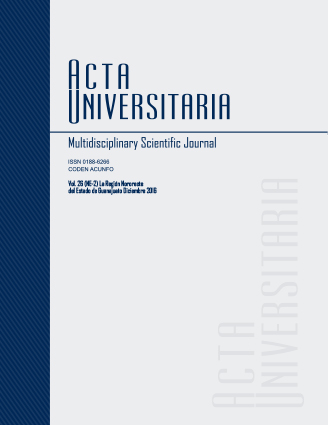Pellets potential use for the treatment of contaminated water with arsenic in communities Xichú, Gto. Mexico
Published 2017-01-17
Keywords
- Arsenic,
- pellets,
- lignocellulosic wastes,
- sustainable technologies,
- Xichú.
- Arsénico,
- pellets,
- residuos lignocelulósicos,
- tecnologías sustentables,
- Xichú.
How to Cite
Abstract
Present work was carried out development of use of pellets from lignocellulosic waste for arsenic-contaminated waters treatment in communities of the municipality of Xichu, Guanajuato, Mexico. Water samples, n = 72, were evaluated based on NOM-127-SSA1-1994. The highest concentration of arsenic was above permissible limits, 0.2 mg.L–1 ± 0.04 mg.L–1. Pellets used were from sawdust, wheat straw, agave and sorghum. Temperature ramp to the best consistency of pellets is optimized. Several experimental designs with pellets were performed, n = 162, in different conditions to develop activation process and treatment with Fe (III). Pellets obtained were placed in water samples contaminated with arsenic 24 h. Arsenic removal at pH between 6.5 to 7, of 98.50% ± 1.2% was achieved.

